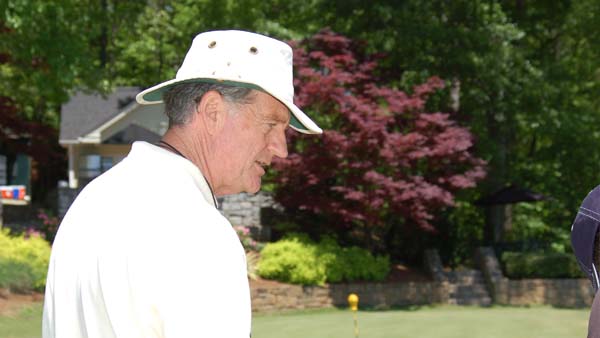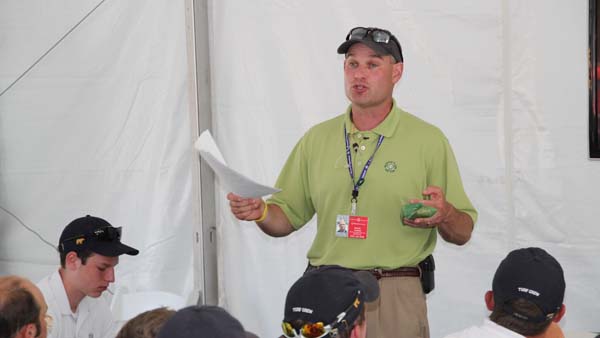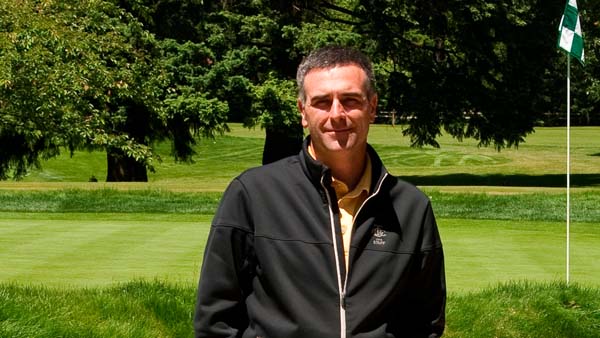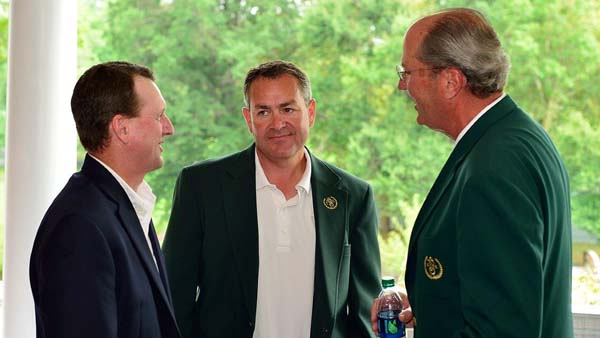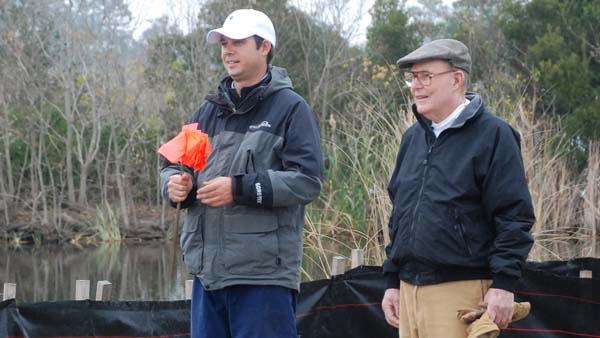

"He'd shuffle into the shop and say 'well, I got this idea . . . ,' " said Owen, who for a couple more weeks will serve as equipment manager at Aldarra Golf Club in Issaquah, Washington before moving on to a new job. "Then he'd ask 'any chance we can do it tomorrow' When he said that, you knew he'd been thinking about whatever it was for a long time and didn't want you to think about it too much." Although he had a penchant for springing projects on his staff with little or no warning, Colleran also taught members of his crew a great deal. A near scratch golfer at one time, Colleran had a way of viewing the golf course from a player's perspective and imparted that ability onto others. "He came from a different background. I was an assistant mechanic when I came here, and he wanted a mechanic who loved the game," Owen said. "He shared with me his insight and thoughts about laying out a golf course and what is presented to a player as he navigates through the course." Colleran, who built and grew-in two high-profile golf courses on the West Coast, died Oct. 8 at age 54 after a year-long battle with brain cancer. He left behind wife Joan, a PGA professional in the association's Pacific Northwest chapter, and sons Troy and Bryce. He built Poppy Hills in Pebble Beach in 1986 and eventually went to Washington in 1999 for the construction and grow-in of Aldarra. For his ability to share with others his vision of what a golf course should be, and for his never-ending dedication to his crew and his course, Colleran was named a finalist for the 2014 TurfNet Superintendent of the Year Award. "He was a great superintendent, and he allowed others to share his passion," said Owen, who nominated his boss and his friend for the award. "He even made guys on the crew who don't play golf feel that same passion." A total of 10 finalists have been chosen by a panel of judges from a field of nominees based on the following criteria: labor management, maximizing budget limitations, educating and advancing the careers of colleagues and assistants, negotiating with government agencies, preparing for tournaments under unusual circumstances, service to golf clientele, upgrading or renovating the course and dealing with extreme or emergency conditions. The winner will be named Feb. 26 at the Golf Industry Show in San Antonio. Previous winners include: Chad Mark (2013); Dan Meersman (2012); Paul Carter, CGCS (2011); Thomas Bastis, CGCS (2010); Anthony Williams, CGCS (2009); Sam MacKenzie (2008); John Zimmers (2007); Scott Ramsay, CGCS (2006); Mark Burchfield (2005); Stuart Leventhal, CGCS (2004); Paul Voykin (2003); Jeff Burgess (2002); Kip Tyler (2001); and Kent McCutcheon (2000). One of the things that stood out most to Owen was Colleran's budget mastery. In the 15 years he was superintendent at Aldarra, Colleran's department came in under budget every year. "That takes someone who is good at knowing where he stands, taking what he had and getting the most from it," Owen said. "I think I learned a thing or two from him." Owen said he recalled touring the course with his boss, and was always amazed at what Colleran could see that others could not. "One thing he was excellent at was that he saw diseases before anyone else could," Owen said. "I'm looking at quality of cut, and he's looking at the health of the grass." Owen has had a difficult time handling the loss of his boss, mentor and friend. Although he could have stayed on and worked with Colleran's former assistant Sean Reehorn who has since been named superintendent, he has decided to make a new start. Later this month he will take on the role of equipment manager Inglewood Golf Club near Seattle. "Everything I see here, I think about Paul," he said. "I need a new challenge and to get this all out of my head. "I never would have thought it would affect me like it has. Joan told me I am suffering from broken heart. I loved that guy. As far as I'm concerned, he's still with me every day." A graduate of Oregon State University, Colleran not only was an accomplished agronomist and player, but his experience as a player allowed him to diffuse member input about course conditions and layout and what might or might not make sense. "He would engage golfers, but he always proved that he knew best about what to do on the golf course," Owen said. "He always told golfers that their job was to have a good time out here and not to worry about the golf course. That was his job." Even after he was diagnosed with cancer, Colleran frequented the golf course as often as possible, and did so in a wheelchair in his final days. In his last visit to the course, just days before he died, he was calling out instructions on a practice range-improvement project. "He had just gotten a call that he had a week to live," Owen said. "He came here that day just to see the project. He wanted to make sure the job was done right. That's just the way he was."
- Read more...
- 5,683 views

